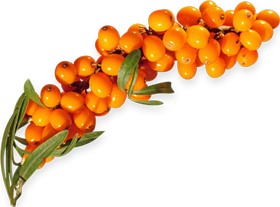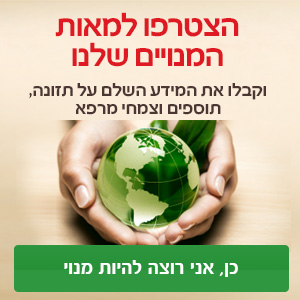חלק הצמח | איכויות | רכיבים פעילים | התוויות | מינונים | רגישות | תופעות לוואי |
מינון יתר | אזהרות | התוויות נגד | רעילות | אינטראקציות | הריון | הנקה
שמו הבוטני המלא של הצמח הוא Rhamnus (Frangula) purshiana
מקור השם Rhamnus הינו ביוונית, ומשמעותו שיח קוצני.
שם הצמח בימי הביניים (Frangula), נגזר מהמילה הלטינית שפירושה ״לשבור״, המתייחסת לגבעולים העדינים של הצמח.
מין הצמח (purshiana) נקרא על שם הבוטנאי הגרמני פרדריק טראוגוט פורש, שהיה הראשון לתאר את הצמח.
השם העממי (Cascara sagrada = קליפת עץ קדושה) ניתן לצמח כאות הערכה ליעילותו, על-ידי כובשים ספרדים במאה ה-17 שחקרו את אמריקה הצפונית ונחשפו לשימוש הילידים בצמח כמשלשל.
אשחר הינו שיח גדול או עץ קטן. מוצאו בארה״ב.
משרד הבריאות בישראל מגביל את השימוש בקליפת הגזע של אשחר, ומתיר אותה לשיווק בבתי מרקחת בלבד.
חלק הצמח בשימוש
קליפת הגזע.
איכויות
טמפרטורה: קר.
לחות: לח, עם פוטנציאל מייבש.
טעם: מריר, מתקתק.
רכיבים פעילים עיקריים
אנטראקינונים* (כ-8% מסך הצמח, ביניהם anthrones, cascarosides A-F, aloins, chrysaloins, Aloe-emodin, chrysophanol, emodin, physicon, glucofrangulins A, B, frangulins A, B).
הפרמקופיאה האירופאית 4.2 ממליצה שקליפת הגזע של אשחר תכיל לא פחות מ-8% גליקוזידים הידרוקסיאנתרצנים, מתוכם לא פחות מ-60% cascarosides.
*בקליפת הגזע הטריה לא מופיעים אנטראקינונים, אלא anthrone וגליקוזידים של dianthrone. חומרים אלו מומרים על-ידי חמצון, במהלך ייבוש ואחסון או חימום מואץ(1-6).
התוויות
עצירות.
מינונים
תמצית נוזלית בריכוז 1:3, 45% אלכוהול – מינון יומי של 4.5-9 מ״ל ביום. מנה בודדת (הניטלת לפני השינה) צריכה להכיל כ- 1.5-3 מ״ל.*
תמצית יבשה – תלוי בריכוז התמצית; מינון המקביל ל- 1.5-3 גרם צמח ביום.
מנה בודדת (הניטלת לפני השינה) צריכה להכיל תמצית השווה לכ-0.5-1.5 גרם צמח יבש.*
מרתח – 0.5-2 גרם.
בפורמולה –10-25%.
*הכנות המקבילות ל- 20-30 מ״ג ביום של נגזרות הידרוקסיאנתרצנים, המחושבות כ-cascaroside A.
רצוי ליטול תמציות של אשחר לפני השינה, על מנת לעודד יציאה בבוקר.
כמו כן, יש להשתמש במינון היעיל הנמוך ביותר הנדרש כדי להשיג יעילות.
רגישות
קיים דיווח אודות למידע השלם למנויים
תופעות לוואי
תופעות לוואי עלולות לכלול למידע השלם למנויים
שימוש בקליפת גזע טריה של אשחר עלולה לגרום ל למידע השלם למנויים
מינון יתר
מינון יתר עלול לגרום ל למידע השלם למנויים
שלשול יתר עלול להוביל ל למידע השלם למנויים
אזהרות וצעדי מנע
משך השימוש – למידע השלם למנויים
חומר גלם – למידע השלם למנויים
התוויות נגד
אשחר אסור לשימוש במצבים של למידע השלם למנויים
אשחר אינו מיועד לטיפול בעצירות ממקור של למידע השלם למנויים
אין לערוך שימוש באשחר כאשר מוצגים תסמינים למידע השלם למנויים
אשחר אינו מיועד לשימוש ב למידע השלם למנויים
רעילות
קיימים שני דיווחי מקרה אודות למידע השלם למנויים
בעבר, פסאודומלנוזיס כתוצאה משימוש במשלשלים (הרחבה תחת סעיף אזהרות וצעדי מנע) נחשד כ למידע השלם למנויים
תגובות הדדיות עם תרופות / צמחי מרפא / תוספי תזונה
השפעה על חילוף חומרים תרופתי למידע השלם למנויים
גליקוזידים קרדיאליים (כדוגמאת תרופות להסדרת קצב הלב) למידע השלם למנויים
תרופות משתנות למידע השלם למנויים
קורטיקוסטרואידים למידע השלם למנויים
שוש קירח (Glycyrrhiza glabra) למידע השלם למנויים
הריון
בהיעדר הכרח, מוטב להימנע משימוש באשחר במהלך תקופת ההריון, ובמיוחד במהלך הטרימסטר הראשון(8,12-14,22,26,27).
שימוש מוגבל בנשים למידע השלם למנויים
נתונים ממחקר פרוספקטיבי אודות 53 זוגות נשים וילדים שנחשפו לאשחר במהלך הטרימסטר הראשון להריון למידע השלם למנויים
מתועדות 188 חשיפות לאשחר במהלך ההריון בכלל; הסיכון היחסי ל למידע השלם למנויים
ברפואה הסינית המסורתית, צמחים המכילים אנטראקינונים למידע השלם למנויים
הנקה
אשחר אפשרי לשימוש בהנקה, תחת פיקוח מקצועי ובזהירות(8).
האקדמיה האמריקאית לרפואת ילדים למידע השלם למנויים
עם זאת, למידע השלם למנויים
מעבר של אנטראקינונים דרך חלב האם עלול לגרום ל למידע השלם למנויים
מקורות
- WHO. Cortex Frangulae. WHO Monographs on Selected Medicinal Plants. 2 vol. Geneva: World Health Organization; 2004:114-123. https://apps.who.int/medicinedocs/en/d/Js4927e/13.html
- Blaschek W et al., eds. Hagers Handbuch der pharmazeutischen Praxis. Folgeband 2: Drogen A–K, 5th ed. Berlin, Springer-Verlag, 1998. https://www.springer.com/de/book/9783642637940
- Farnsworth NR, ed. NAPRALERT database. Chicago, University of Illinois at Chicago, IL. https://napralert.org/
- Bisset NG. Herbal drugs and phytopharmaceuticals. Boca Raton, FL, CRC Press, 1994:463–469. https://trove.nla.gov.au/work/30952715?q&versionId=261864859
- Bruneton J. Pharmacognosy, phytochemistry, medicinal plants. Paris, Lavoisier, 1995. https://trove.nla.gov.au/work/6010475?q&versionId=45627891
- Westendorf J. Anthranoid derivatives—Rhamnus species. In: De Smet PAGM et al., eds. Adverse effects of herbal drugs. Vol. 2. Heidelberg, Springer-Verlag, 1993:129–131. https://link.springer.com/chapter/10.1007/978-3-642-48906-8_6
- Giavina-Bianchi PF Jr, Castro FF, Machado ML, et al. Occupational respiratory allergic disease induced by Passiflora alata and Rhamnus purshiana. Ann Allergy Asthma Immunol. 79(5):449, 1997. https://www.ncbi.nlm.nih.gov/pubmed/9396980
- Mills. S, Bone K, The Essential Guide to Herbal Safety. Churchill Livingstone, 2005. https://www.elsevier.com/books/the-essential-guide-to-herbal-safety/mills/978-0-443-07171-3.
- Duncan A, Morris AJ, Cameron A, et al. Laxative induced diarrhoea--a neglected diagnosis. R Soc Med 85(4):203-205, 1992. https://www.ncbi.nlm.nih.gov/pmc/articles/PMC1294723/
- Bradley PR, ed. British herbal compendium. Vol. 1. Bournemouth, British Herbal Medicine Association, 1992. https://trove.nla.gov.au/work/5958289
- Hardman JG, Limbird LE, eds. Goodman and Gilman’s The pharmacological basis of therapeutics, 9th ed. New York, McGraw–Hill, 1996. https://www.ncbi.nlm.nih.gov/nlmcatalog/9512534
- Brinker F. Herb Contraindications and Drug Interactions, 4th ed. Sandy (OR): Eclectic Medical Publications; 2010. https://www.eclecticherb.com/herb-contraindications-drug-interactions/.
- De Smet PAGM et al. (eds.). Adverse Effects of Herb Drugs 2. Springer-Verlag, Berlin, 1993. https://link.springer.com/book/10.1007%2F978-3-642-60367-9.
- McGuffin M, Hobbs C, Upton R, Goldberg A (ed.). American Herbal Products Association’s Botanical Safety Handbook. CRC Press, Boca Raton, 1997. https://www.crcpress.com/American-Herbal-Products-Associations-Botanical-Safety-Handbook/Gardner-McGuffin/p/book/9781466516946.
- Mitty RD, Wolfe GR, Cosman M. Initial description of gastric melanosis in a laxative-abusing patient. Am J Gastroenterol. 1997 Apr;92(4):707-8. https://www.ncbi.nlm.nih.gov/pubmed/9128333
- Benavides SH, Morgante PE, Monserrat AJ, Zárate J, Porta EA. The pigment of melanosis coli: a lectin histochemical study. Gastrointest Endosc. 1997 Aug;46(2):131-8. https://www.ncbi.nlm.nih.gov/pubmed/9283862
- Leng-Peschlow, E. Senna and its rational use. Pharmacology. vol 44, S1, 33-35, 1992. https://www.bookdepository.com/Senna-Its-Rational-Use-E-Leng-Peschlow/9783805555746
- Krbavcic A, Pecar S, Schara M, Müller K, Wiegrebe W. Anthranoid free radicals found in pseudomelanosis coli. Pharmazie. 1998 May;53(5):336-8. https://www.ncbi.nlm.nih.gov/pubmed/9631503
- Leng-Peschlow, E. Senna and its rational use. Pharmacology vol 44, S1, 26-29, 1992. https://www.bookdepository.com/Senna-Its-Rational-Use-E-Leng-Peschlow/9783805555746
- Lust J. The Herb Book. Bantam Books, New York, 1974. https://www.biblio.com/book/herb-book-complete-authoritative-guide-more/d/1245547618
- African pharmacopoeia. Vol. 1, 1st ed. Lagos, Organization of African Unity, Scientific Technical & Research Commission, 1985. https://www.worldcat.org/title/african-pharmacopoeia/oclc/13290371
- Blumenthal M et al., eds. The complete German Commission E monographs. Austin, TX, American Botanical Council, 1998. https://www.elsevier.com/books/the-complete-german-commission-e-monographs/unknown/978-0-9655555-0-0
- Tyler VE, Bradley LR, Robbers JE, eds. Pharmacognosy, 9th ed. Philadelphia, PA, Lea and Febiger, 1988:62–63. https://trove.nla.gov.au/work/10617947?q&sort=holdings+desc&_=1558445423157&versionId=14209568
- Brinker F. The Toxicology of Botanical Medicines, 3rd ed. Eclectic Medical Pub., Sandy, Ore., 2000. https://www.eclecticherb.com/the-toxicology-of-botanical-medicines
- Brinker F. Botanical Medicine Research Summaries, from Eclectic Dispensatory of Botanical Therapeutics, vol. II. Eclectic Medical Pub., Sandy, Ore., 1995.
- Wichtl M (ed.). Herbal Drugs and Phytopharmaceuticals. CRC Press, Boca Raton, 1994. https://trove.nla.gov.au/work/30952715?q&versionId=41469057.
- Brooks S (ed.). Botanical toxicology. Protocol J. Bot. Med., 1(1):147-158, 1995.
- Gruenwald J, Brendler T, Jaenicke C (eds.). PDR for Herbal Medicines. Medical Economics Co., Inc., Montvale, NJ, 2000. https://www.travolekar.ru/arch/Pdr_for_Herbal_Medicines.pdf
- Nadir A, Reddy D, Van Thiel DH. Cascara sagrada-induced intrahepatic cholestasis causing portal hypertension: case report and review of herbal hepatotoxicity. Am J Gastroenterol 2000;95(12):3634-7. https://www.ncbi.nlm.nih.gov/pubmed/11151906
- Jacobsen C, Semb S, Kromann-Andersen H. [Toxic hepatitis following consumption of the herbal medicinal product Cascara Sagrada]. Ugeskr Laeger. 2009 Nov 9;171(46):3367-9. https://www.ncbi.nlm.nih.gov/pubmed/19925744
- van Gorkom BA, de Vries EG, Karrenbeld A, Kleibeuker JH. Review article: anthranoid laxatives and their potential carcinogenic effects. Aliment Pharmacol Ther. 1999 Apr;13(4):443-52. https://www.ncbi.nlm.nih.gov/pubmed/10215727
- Nusko G, Schneider B, Ernst H, Wittekind C, Hahn EG. Melanosis coli - a harmless pigmentation or a precancerous condition? Zeitschrift fur Gastroenterologie [1997, 35(5):313-318]. http://europepmc.org/abstract/med/9188145
- Nusko G, Schneider B, Müller G, Kusche J, Hahn EG. Retrospective study on laxative use and melanosis coli as risk factors for colorectal neoplasma. Pharmacology. 1993 Oct;47 Suppl 1:234-41. https://www.ncbi.nlm.nih.gov/pubmed/8234435
- Nascimbeni R, Donato F, Ghirardi M, Mariani P, Villanacci V, Salerni B. Constipation, anthranoid laxatives, melanosis coli, and colon cancer: a risk assessment using aberrant crypt foci. Cancer Epidemiol Biomarkers Prev. 2002 Aug;11(8):753-7. https://www.ncbi.nlm.nih.gov/pubmed/12163329
- G Nusko, B Schneider, I Schneider, Ch Wittekind, E G Hahn. Anthranoid laxative use is not a risk factor for colorectal neoplasia: results of a prospective case control study. Gut 2000;46:651-655. https://www.ncbi.nlm.nih.gov/pmc/articles/PMC1727932/
- Siegers CP, Hertzberg-Lottin E von, Otte M, Schneider B. Anthranoid laxative abuse – a risk for colorectal cancer? Gut, 34:1099-1101, 1993. https://www.ncbi.nlm.nih.gov/pmc/articles/PMC1374362/
- Sonnenberg A, Müller AD. Constipation and Cathartics as Risk Factors of Colorectal Cancer: A Meta-Analysis. Pharmacology 1993;47:224–233. https://www.ncbi.nlm.nih.gov/pubmed/8234434
- Fairbarin JW, Simic S. Estimation of C‐glycosides and O‐glycosides in cascara (Rhamnus purshiana DC., bark) and cascara extract (1964) J. Pharm. Pharmacolo. 16, 450. https://onlinelibrary.wiley.com/doi/abs/10.1111/j.2042-7158.1964.tb07492.x
- Scientific Committee of ESCOP (European Scientific Cooperative on Phytotherapy): ESCOP monographs: Aloe capensis – cape Aloes. UK, June 1997, European Scientific Cooperative on Phytotherapy Secretariant. http://escop.com/downloads/barbados-Aloes/
- Cumming AM, Boddy K, Brown JJ, et al. Severe hypokalaemia with paralysis induced by small doses of liquorice. Postgrad. Med. J., 56:526-529, 1980. https://www.ncbi.nlm.nih.gov/pubmed/7443613
- Briggs GG. Drugs in pregnancy and lactation:a reference guide to fetal and neonatal risk,ed 6,Philadelphia,2002, Lippincott Williams & Wilkins, pp 197-198. https://books.google.co.il/books?id=_dJsAAAAMAAJ&source
- Hagemann TM. Gastrointestinal medications and breastfeeding. J Hum Lact 14:259-262, 1998. https://www.ncbi.nlm.nih.gov/pubmed/10205441
- American Academy of Pediatrics Committee on Drugs. Transfer of drugs and other chemicals into human milk: Pediatrics 108(3):776- 789, 2001. https://www.ncbi.nlm.nih.gov/pubmed/11533352

דוגמא למונוגרף מלא
לרכישת מנוי |
כניסת מנויים






